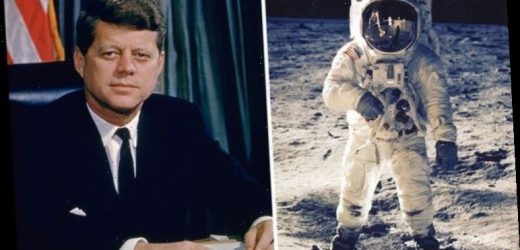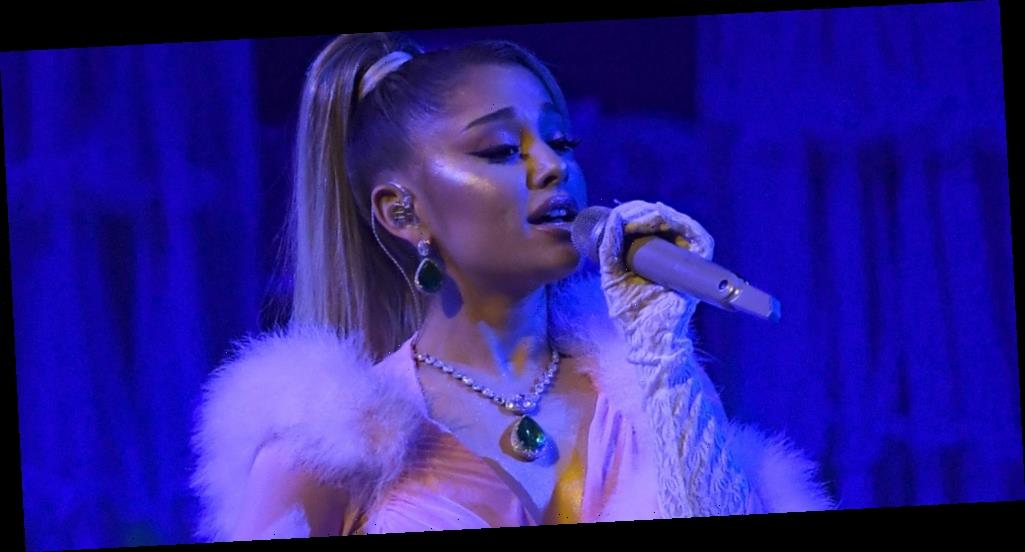Apollo 11: US government ‘encouraged by photos’ says El-Baz
Apollo 11 successfully landed the first two men – Neil Armstrong and Buzz Aldrin – on the lunar surface more than 50 years ago, fulfilling President John F Kennedy’s goal. Recordings from a secret meeting at the Oval Office in 1963 have already revealed Kennedy’s doubts about the mission after investing more than $25billion (£18billion) on the “most ambitious space programme in national history”. But now, author and curator of the Smithsonian’s Apollo collection, Teasel Muir-Harmony, has uncovered documents from the United States Information Agency (USIA) that appear his true plot.
Dr Muir-Harmony combed through troves of hidden government documents to produce her new book ‘Operation Moonglow: A Political History of Project Apollo’ as she attempts to “shine a light on the little-known role” that propaganda and foreign relations played in fuelling the Space Race.
She claims that Kennedy “didn’t propose it for the sake of science,” and it was instead a “demonstration of what the American industry was capable of and a demonstration of American values”.
The idea of landing man on the extraterrestrial body was first conceived by the Eisenhower administration as a way to “contain communism, align the world with the US and shore up America’s power”.
But, according to USIA Acting Director Donald Wilson, when Kennedy took office in 1961, he saw an opportunity.
We will use your email address only for sending you newsletters. Please see our Privacy Notice for details of your data protection rights.
In the book, he said that Kennedy was “a man who perhaps better than any other president in our history, understood how foreign opinion worked, what moulded it, what shaped it and how to shape it”.
And that meant doing things differently to the USSR.
Dr Muir-Harmony adds: “The Soviet Union was relatively closed about what they were launching, when they were launching it and their technology.
“The US took a different tack, inviting the press to cover launches and sending spacecraft around the world.”
In 1961, Freedom 7 – the capsule that carried the first American into space – was exhibited in Paris and Rome, drawing more than a million visitors.
A USIA report to Congress revealed in the book reads: “Two young men soared into space early this year.
“The Russian was the first one up, but the American’s achievement was more widely heard and even more widely believed.”
And that was demonstrated after John Glenn became the first man to orbit the Earth in 1962.
The USIA and the State Department selected cities that would be “most strategically advantageous” to exhibit his capsule – Friendship 7.
On its first showing in London, thousands were turned away due to overcrowding and in Paris visitors waited five hours, forcing the museum to stay open until midnight.
DON’T MISS
Stephen Hawking’s ‘black hole time machine’ proposal to NASA [REVEALED]
Stonehenge breakthrough: Julius Caesar letter exposes ‘secret’ [VIDEO]
Antarctica discovery: Century-old letter reveals shock find [PICTURES]
Papers show American embassies around the world were desperate for a visit of their own.
And this came with potential benefits.
The US embassy in Turkey wrote that a visit would be “extremely useful [for] this NATO partner which directly confronts the USSR”.
On July 20, Armstrong and Aldrin brought an end to the Space Race by burying the US flag into the dusty surface of the Moon, but Kennedy never got to see it – he was assassinated in November 1963.
But it appears his plot was not foiled.
Dr Muir-Harmony writes that President Richard Nixon timed a “diplomatic tour explicitly to take advantage of the international popularity of the Moon landing”.
Operation Moonglow sought to demonstrate a concern for Asia and Eastern Europe and a commitment to securing peace in Vietnam with the message that “if mankind can send men to the Moon, then we can bring peace to the Earth”.
But Dr Muir-Harmony says that, using the trip for cover, Nixon and his national security advisor, Henry Kissinger, were able to have secret meetings with the North Vietnamese that helped pave the way to ending the war.
As Kennedy had envisioned, the space programme went a long way towards improving America’s brand, and what the author concludes as creating “a sense of goodwill”.
‘Operation Moonglow: A Political History of Project Apollo’ is published by Basic Books and available to purchase here.
Source: Read Full Article








